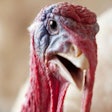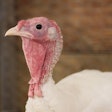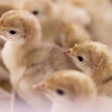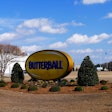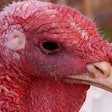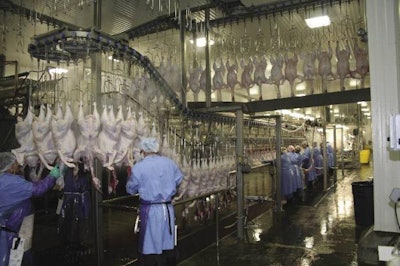
June, 2006- No business model in the turkey industry can really be called “typical” or “usual,” and it is hard to really identify a trend in the industry. Normally, as an industry matures, firms within the industry consolidate and there are fewer larger companies in the business. In many ways, the turkey industry defies convention, and its approach to maturation is another example of how the turkey industry is not following the typical pattern. The march towards consolidation in the turkey industry has been stalled, and instead there have been several grower-owned cooperatives or LLCs form and move into the processing business. Norbest has been around for over 75 years, but the rest of the industry’s cooperatives have all entered the processing business in the last decade. Early this year, Dakota Provisions became the fourth grower-owned business to form and enter the turkey processing business since 1996, joining West Liberty Foods, Michigan Turkey Producers and Virginia Poultry Growers Cooperative. WATT PoultryUSA recently visited Huron, S.D., to tour Dakota Provisions, the U.S. turkey industry’s first new slaughter, deboning and further processing facility built on one site in two decades.
Jeff Sveen, chairman of the board, Dakota Turkey Growers, LLC, dba: Dakota Provisions, is a lawyer and he has been representing the interests of several Hutterite colonies in South Dakota since 1982. Hutterites are one of the Anabaptist faiths, the Amish and Mennonites are the others, and the Hutterian Brethren first immigrated to the plains region of the USA and Canada in the late 1870s. Anabaptist faiths practice adult baptism and they generally believe in living a simple life. Hutterites live communally in colonies, which have around 100 members. The land, buildings and equipment are owned by the colony, not by the colony’s individual members. Another tenet of the Hutterite faith is that the colony should separate itself from those who do not share their beliefs. Because of this, Hutterite colonies need people whom they can trust, like Sveen, to help them interact with the world outside the boundaries of their insular colony life.
Work in the Hutterite colonies is centered on agriculture. Sveen said that colonies range in size from around 3,000 acres to 10,000 acres. Land east of the Missouri River in South Dakota is primarily used for raising grain, and most of the colonies in South Dakota are in this grain belt. Colonies typically raise corn, wheat and soybeans and these grains are used as feedstuffs for animals raised at the colonies. There are 63 Hutterite colonies in the Dakotas and Minnesota, and many of these raise turkeys. Sveen worked with the senior elder of the Hutterites to form the colonies into a cooperative, to improve their purchasing power with soybean meal processors in 1990. The colonies raise soybeans and sell them to soybean processors, but they buy back soybean meal to feed to their animals. Sveen said that in the fall of 2002 some cooperative members expressed their desire to build a turkey plant of their own.
Prior to the opening of Dakota Provisions, the colonies sold their turkeys to Oak Valley Farms, Watertown, S.D.; Bil Mar Foods, Storm Lake, Iowa; or to Jennie-O Foods. Some birds were hauled as far as 350 miles to get to the slaughter plant. Sveen said that the cooperative members told him that they didn’t think they were getting paid enough for their turkeys. According to Sveen the growers told him, “We can’t survive in this business. We need to build our own plant.” Sveen said that he wasn’t really enthused with the idea at first. He asked the growers who they thought would build the plant for them, and they said, “You are.” Sveen said he listened to what the growers had to say, and then this tale took an interesting twist. The fall of 2002 was a gubernatorial campaign year in South Dakota. One of the candidates for governor was scheduled to meet with Sveen that day. South Dakota has a population of less than 800,000 people, so the Hutterite colonies are considered to be a valuable voting block.
During a Friday afternoon meeting with the candidate for governor, Sveen asked, “If we decide to build a plant, will you help us?” Sveen reports that the candidate said “yes.” Well the political grapevine in South Dakota works quickly, so by Monday morning the governor at that time, William J. Janklow, called Sveen and asked about the turkey plant, and by that afternoon the governor said that he had a building they could use as a processing plant. The building was a former potato processing plant, which the cooperative decided to pass on, but Sveen reports that the governor promised to help them get into the turkey processing business in South Dakota. Sveen said, “And then it just kind of steam rolled from there.”
“I formed a committee of five Hutterites and myself to investigate whether this was something that was even possible. One of the first things we did was visit several other processors including the folks at West Liberty Foods, and Ken (Rutledge) was the CEO there,” Sveen said. The LLC commissioned an economic feasibility study, and Sveen said that they came to the conclusion that if they wanted to stay in the turkey business, they needed to build their own plant. He said that they needed someone with experience to guide them through the process of building a company from scratch. “I am smart enough to know that I know nothing about turkeys,” Sveen said. He was able to convince Ken Rutledge to join them as president and CEO and get them started in the right direction.
Dakota Provisions is owned entirely by the growers; there are no outside investors. There are 42 Hutterite colonies and one independent grower, Wally Wittenberg, who are the owners of Dakota Provisions. There are five turkey-growing Hutterite colonies that decided not to participate in Dakota Provisions. Sveen said that the colonies did not have to guarantee the loans for the plant, but the colonies put in substantial capital. Each grower or colony has a contract with the processing company that determines payment for the birds. The State of South Dakota provided help in the form of grants and low interest loans to help finance Dakota Provisions’ $45 million facility.
Rutledge responded to a question about whether it was a tough decision for the growers to make on whether or not they should build their own plant. “There wasn’t really a lot of negativism as far as the growers were concerned. They accepted the fact that they were not going to be in the poultry business for long if they didn’t do something. It didn’t take a lot of salesmanship to convince people (to build a plant), they were convinced,” he said. Rutledge said that after the decision had been made to build a plant, the toughest choice he had to make was which engineering firm should do the job. “It was a tough decision, when we sat down and talked with companies about who had the most experience and who knew how to construct a turkey plant. What tipped the scales is that we found a group that had experience in building plants in cold weather environments. We chose the Stellar Group,” Rutledge said.
Dakota Provisions is built to slaughter and debone heavy toms and then to fabricate the meat into logs and cook and slice those logs. Rutledge said, “There is a lot of interest and pent-up demand for someone who is capable of performing the kind of slicing that we are capable of doing.” Attracting and satisfying customers were important factors in how the plant was designed, according to Rutledge. “We tried to incorporate everything we could that would enthuse a customer about doing business with us,” he said.
Built to Slice
Dakota Provisions’ plant can slaughter, chill and debone 4 million head of heavy toms per year on one shift, and it was built to handle future growth. Dakota Turkey Growers’ farms will raise 5.6 million head of toms in 2006. Rutledge said that some of the colonies have contracts with other plants that will not expire until 2008, and that Dakota Provisions will process under 4 million head in 2006. Dakota Provisions has one, two-inspector evisceration line that is being operated under NTIS, but if the plant switches to HIMP, the plant could process as many as 5 million head on one shift. Two massive Morris chillers, each almost 150 feet long, are employed to chill the eviscerated carcasses below 40 F during their 4.5-hour trip through the chillers. Rutledge reports that the chillers and the rest of the raw side of the plant were engineered for possible implementation of HIMP and that the plant could ultimately process as many as 10 million head of toms per year. The further processing side of the plant was built so that it could be easily added on to, but it is sized to handle the volume generated by one shift of slaughter and deboning. The total square footage of the plant now stands at 150,000.
Usually, when a new processing company enters the marketplace it does so on commodity meat markets. By jumping right into value-added sliced products, Dakota Provisions hopes to avoid some of the volatility of commodity meat prices. Rutledge commented on how any possible over-supply situation could affect commodity prices and what impact this could have on Dakota Provisions. “I think that this year will turn out to be a decent year (for commodity turkey meat); next year I think that there could be some question. But if our process moves along the way we intend to move it along, we won’t be in the raw material market then,” Rutledge said. Rebecca Rodgers, sales and marketing manager, said that the company’s long-term plan is for 70 percent of its volume to be sold further processed and 30 percent to be sold raw.
Dakota Provisions uses a carbon dioxide stunning system that was designed and built by the metal working shop on Riverside Colony. The stunner has three chambers and the birds spend one minute in each chamber. Anoxia is used to stun the birds, and the first chamber has a low carbon dioxide level and the second chamber has a higher carbon dioxide level and the third even higher. There is no pit in this system, and it has a much smaller footprint than do most commercially available systems.
Birds are harvested at 19.5 weeks of age, and their target weight is 38 to 40 pounds. Dakota Provisions purchased the trailers used to carry the birds to the plant, but an outside hauler operates the trucks and the growers load the birds themselves. The cages can be removed from the trailers and they come into the plant double stacked on the trailers. Each cage “unit” has three cages and around 14 birds are loaded in each cage. Each three-cage unit goes into the stunner separately, so a three-cage unit is ready each minute to be hung. Riverside Colony’s metal shop was scheduled to fabricate a cage wash that the cages will go into after the stunner automatically tips out the stunned birds. The washed cages will then be loaded back onto the trailers by a forklift. The stunned birds require only half the labor to hang as would be employed with a traditional hanging and stunning system and the ergonomics for the job are significantly improved as well.
After bleed-out, the birds go through a series of three Stork scalders, which are used to improve cleanliness of the birds exiting the last scalder. The scalders are operated at 128 F, 134 F and 137 F, with the temperature increasing from the first scalder to the last. Next, three S.B. Impianti pickers are employed to pluck the birds. The evisceration room is typical of most U.S. turkey plants, and very little automation is used. A Stork three-point machine is employed, but no other processing steps are automated in this room. In both evisceration and deboning, the company believes that better quality and yield can be obtained doing the majority of the processes by hand.
A Stork inside-outside bird wash rinses the birds prior to them entering the immersion chillers. Chlorination in the chillers is provided by an Ecolab Quadexx chlorination system. Upon exiting the chillers, the birds are hung by the neck in shackles on the deboning line. Dapec equipment is available for thigh, wing drumette and drumstick deboning, but the hind saddles are cut-up by hand. No leg processor is used. Two cone lines are used for hand deboning the front halves. The plant employed around 400 people in April, and the company expects to employ around 500 by the end of the year. Dakota Provisions can make ground turkey from deboned, disinewed drumstick meat, and it has a modified atmosphere gas flush packaging machine from Reiser. Rodgers said that the company will be able to co-pack ground turkey. The company will also be able to make mechanically separated turkey.
The fabrication room is where injection, mixing, tumbling and stuffing functions are performed. Other than the gas flush packaging machine for ground turkey, everything else in the room is geared to stuffing logs. Logs for cooking and slicing are the primary product of this room. The only connection between the raw and cooked sides of the plant is the Unitherm three-lane continuous oven, which first cooks the logs and then chills them back down. One person loads the oven with racks at the entrance end and another removes the racks of finished product, chilled to 28 F, at the exit end ready to be sliced. Each lane in the oven has its own temperature controls, and the oven can be operated 24 hours per day. No smoking will be done in the ovens; smoke flavor, if required, will come from treated casings. Product rides through the oven on racks, which sit on trolleys that are pulled through the ovens. The oven is sized to cook 1.5 million pounds per week in five days of operation.
Five Slicing Rooms
Dakota Provisions’ plant was built with five slicing rooms, which can each slice 18,000 to 20,000 pounds of logs per shift. So, initially, the plant can slice 200,000 pounds per day or 1 million pounds in a five-day week. The plant was just getting started cooking and slicing in mid-April and expected to start shipping product to customers in mid-May. Weber slicers are employed and VC-999 model number RS520 gas flush packaging machines are used to package the sliced products. Rodgers said that the packages of sliced product can be as large as 3.75 pounds a piece, but they are normally between 1 to 2 pounds, and that Dakota Provisions will sell to foodservice and retail customers and will co-pack product for other accounts. The company can add more slicing rooms and ovens to the plant when they need it, like when they add a second kill shift. Dakota Provisions can use other processors’ red meat or chicken to make logs, or can slice logs shipped to the plant, in addition to slicing logs from their own turkey.
One of the slicing rooms has a CFS fryer and cruster unit, which can be used to oil brown logs with a variety of oils. The only logs that they have to crust are the logs that go through the fryer, because all of the logs are chilled to 28 F when they exit the oven.
Practical Considerations
Food safety and security are built into all aspects of the design of the plant. A perimeter fence surrounds the plant, and there is only one entrance for trucks. An ADT security system with 28 video cameras is installed at the facility. The digital video is used to monitor compliance with quality procedures like hand washing and donning and doffing entering the slicing rooms as well as for more traditional plant security reasons. An outside service monitors the video each evening and gives the plant an audit score the next morning.
All employees and visitors must swipe their identification card to enter the facility. Raw and cooked sides of the plant have separate parking lots, employee welfare facilities and entrances. The identification cards can prevent raw side employees from entering the cooked side of the plant, and vice versa. Employees also wear different color smocks on the two sides of the plant and the two sides of the plant are also color-coded.
Each side of the plant has its own drains and air handling systems. Maintenance departments, people and tools are kept separate for the two sides of the plant and all plant crawl spaces are separated as well. The only crossover point between the two sides is the oven.
Huron used to have two beef plants and one pork plant, but the last of these plants closed in 1997. Because of the old plants, the city has 700 acres of wastewater treatment lagoons, so the Dakota Provisions did not have to build any wastewater treatment facilities; all the plant does is screen the wastewater and send it to the city for treatment.
Communal Living
Riverside colony is near the James River just outside of Huron, and it is one of the 42 Hutterite colonies that belong to Dakota Turkey Growers, LLC. Four of the colonies are in North Dakota, four are in Minnesota, and the rest are in South Dakota, east of the Missouri River. This is one of the lowest corn price areas in the country, so the colonies would not get “top” dollar for their grain if they sold it instead of feeding to their animals. The colonies store their grain on the farm and mill it for feeding to their animals. In total, the cooperatives’ members have $130 million invested in their live-production facilities. Riverside has storage for 450,000 bushels of grain and a roller mill for rolling the corn, which is mixed with soybean meal, vegetable oil, animal fat, vitamins and minerals and any other micro ingredients like coccidiostats, to make complete turkey and swine feeds.
Riverside has one turkey brooder house and three turkey finisher units and is operated as a two-stage, four-age turkey farm. Riverside also has a 1,000-sow farrow-to-finish operation. The colony grows enough corn on its 5,000 acres to feed all of the colony’s animals, and a little more, and the turkeys and swine eat 400,000 bushels of corn per year.
Riverside’s brooder house is 60 feet by 230 feet. It has solid-sidewalls and it has a concrete floor. It is heated with a propane hot water boiler. The hot water is pumped through “fin pipes” near the ceiling, which serve as radiators and through pipes in the concrete floor. There are no individual brooder stoves. As many as 18,200 poults are brooded at a time, and the birds are moved at four weeks of age to one of the finisher units. The three finisher units vary in size, so the number of poults placed is not the same each flock. The largest finisher house is 70 feet by 720 feet, and the farm has a total of 127,000 square feet of curtain-sided finisher houses.
Riverside colony has 110 members and was formed in 1949. The colony has been raising turkeys for 25 years. Ruben Waldner is in charge of the colony’s turkey operation and he has two other colony members who help him care for the flocks.
Riverside has two coal-fired boilers that are used to heat the turkey finishing houses and the hog houses. Coal is delivered by tractor trailer, and it is fed into the furnaces for the boilers by computer-controlled machinery. Hot water is pumped from the boiler by computer-controlled pumps through insulated pipes buried four feet in the ground to the finisher houses. Fin pipes in the houses are used to distribute the heat. The water is heated to 180 F and it comes back to the boiler at around 138 F. Waldner said that they have had the coal furnace and boiler for around five years and that the boiler for the turkey houses was purchased used in England and shipped to the colony. Waldner said that when it is around -10 F outside, it only cost about $50 per day for the coal used to heat the finisher houses for the turkeys. He said that they do not have trouble keeping the finisher houses warm in winter, even though they move birds out of the brooder house at four weeks of age. The furnace uses around a trailer load of coal every three weeks in the winter.
Despite the relatively simple way of life on the colony, all of the operations are very high-tech. Riverside has a sophisticated live-bird scaling system hooked up to the computer in the ante room of the brooder house. Weights are taken continuously in all of the houses, and Waldner said that he uses the information to help tell if a flock is starting to feel poorly, before the mortality increases. Also, a Regal gas chlorination system is used for the turkey’s drinking water, and carbon dioxide is used to lower the pH to 5.9. Waldner said that carbon dioxide is relatively inexpensive because of the ethanol plants in the state.
Riverside colony has around 110 members and, like most Hutterite colonies, not everyone works in agriculture. Most colonies also have a side business besides farming. Riverside has a metal fabrication shop with state-of-the art equipment, including a $750,000 laser cutter. Riverside has done fabrication work for the Dakota Provisions plant, like building the CAS system, and does work for other outside customers.
Eighty percent of Dakota Turkey Growers’ birds are raised within 100 miles of Huron. Because of the great distances between farms and the lack of other poultry in the area, Rutledge says they have the potential to produce all-natural or organic product. Since the colonies raise their own grain, they could produce organic product without dramatically increasing their feed cost. There is very little traffic into or out of a colony, everyone lives there that works with the birds and the grain is raised and milled on site. This isolation makes specialty-growing programs an attractive alternative.
Dakota Provisions is charging the growers for live haul based on an average cents per pound basis, not based on distance from the farm. Rutledge said that this is the way the members wanted it. Dakota Provisions offered growers two contracts, one fixed price and the other a variable contract based on prices for corn and soybean meal. Rutledge said that no one opted for the flat price contract alternative. “I think as we move forward we will get some folks interested in the flat price contract,” Rutledge said.






